Hello! I am writing to you all from lovely Madrid, where it’s a balmy 14 degrees Celsius (57 F for those on the home front.) I know it’s been a while since I’ve updated, but in case the first sentence didn’t tip you off, I am now occupied with the life of an English teacher in Spain! Yes, it’s been fun and exciting past few months, mainly with the challenges that come with cooking dinner not as a side project but as survival. Thankfully I discovered a recipe for fish stew, which is perfect for those chilly autumn/winter nights. I first tried making this dish back in the height of summer, which turned out to be a bad choice. But now that it’s getting colder (see first sentence of this post) I might trot this recipe out again. This food is adapted from Dad’s Fish Stew over at simplyrecipes.com. I changed it around a little, namely by adding some celery and carrots, because I find that firmness of these vegetables adds good substance to stews. Potatoes also fall into this category, but I didn’t have any around the house when I started cooking.
Fish Stew
1 onion, medium/small dice
Garlic (as much as you want, I used 13 cloves. Lucky!)
2/3 cup fresh chopped parsley
1 cup diced tomato (1 medium sized tomato)
2 tsp tomato paste (it’s slightly more expensive but if you get it in a tube, it will keep longer in the fridge)
1 cup clam juice
1.5 lbs fish fillets, cut into small pieces (I used cod, but any white fish will do, like pollock, haddock, or tilapia)
Salt, pepper, oregano, and any other spices you might like (see below)

As you can see above, I also have some chipotle chili powder to add smokiness to the dish. Additionally, Cajun spice always goes well with fish. Finally, crushed red pepper flakes to finish puts some heat in it, if that’s your thing.
Start by peeling your garlic, and then going through the ritual of trying to get the garlic smell off of your fingers. A little tip I like is to use lemon juice when you’re washing up after, it works most of the time. I’ve also heard that rubbing your fingers on stainless steel before using soap works, but the only stainless steel object I could find was a chef’s knife, and I am not brave enough to try that yet.

Now that your garlic is peeled, it should be minced. The other vegetables get diced.
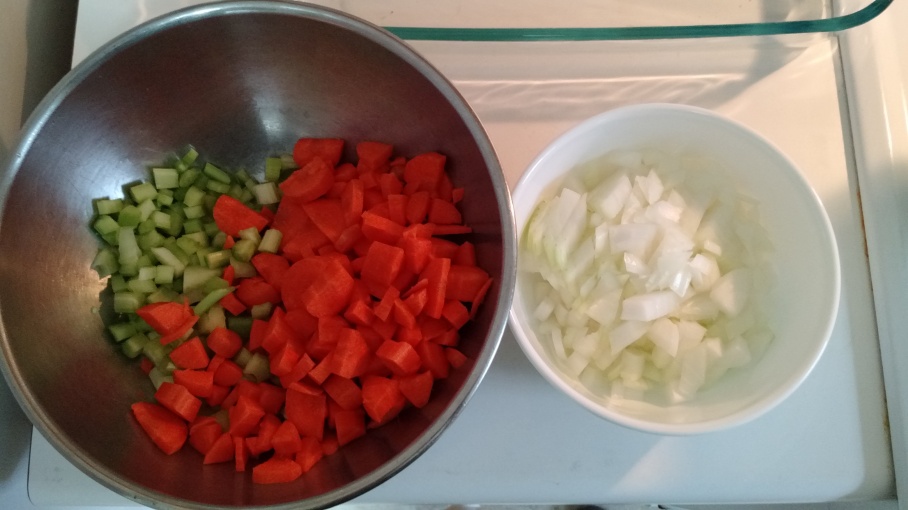
Don’t forget the tomato! Since this dish will be stewing a while, I didn’t feel the need to seed it first.
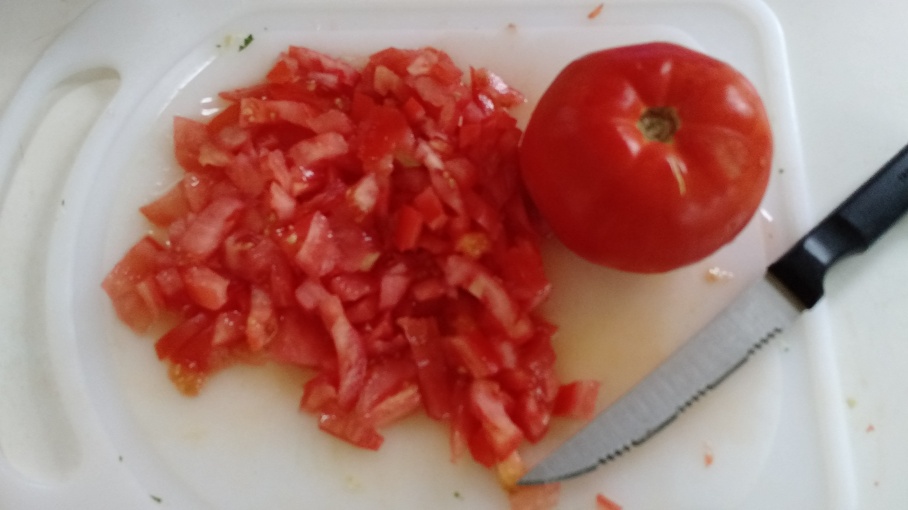
And the parsley should get chopped.

Whew! A lot of cut vegetables up in this piece. One thing I noticed while writing this post is that this stew contains three different styles of cutting vegetables – chop, dice, and mince. Might make a good writing topic for a future blog post, hmm…
At this point, heat up some olive oil in a Dutch oven over medium-high heat and begin to saute the onion, celery, and carrot. I am not fortunate enough to own a Dutch oven, so I’m using the heaviest-duty stock pot I have (Note to self: ask for Dutch oven for Christmas.)
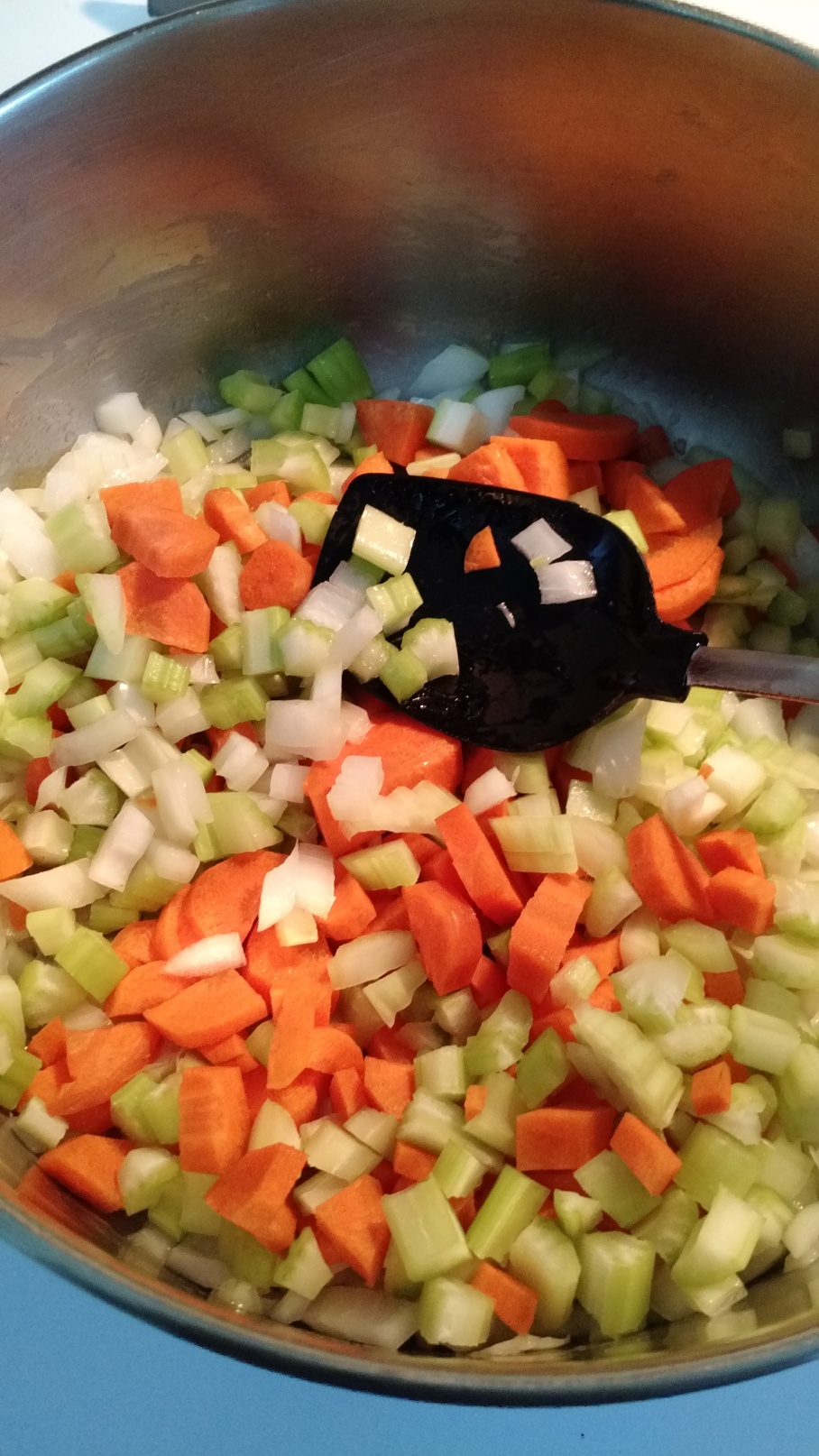
They should take about 5-8 minutes to soften, depends on how hot your burner is and how heavy your pot is. If you’ve got no sense of time, you can also see a vegetable’s doneness by watching the color leach out of the vegetables as well!
I would normally saute the carrots for longer, but since they’ll be simmering in a stew for a while, that will give them time to soften. If you’re making, for example, a stirfry and you want to use a firm vegetable like potato or carrot without getting hard chunks, parboiling is key.
At this point, stir in the parsley for a few minutes. Notice how the color is drained from the carrots and such.
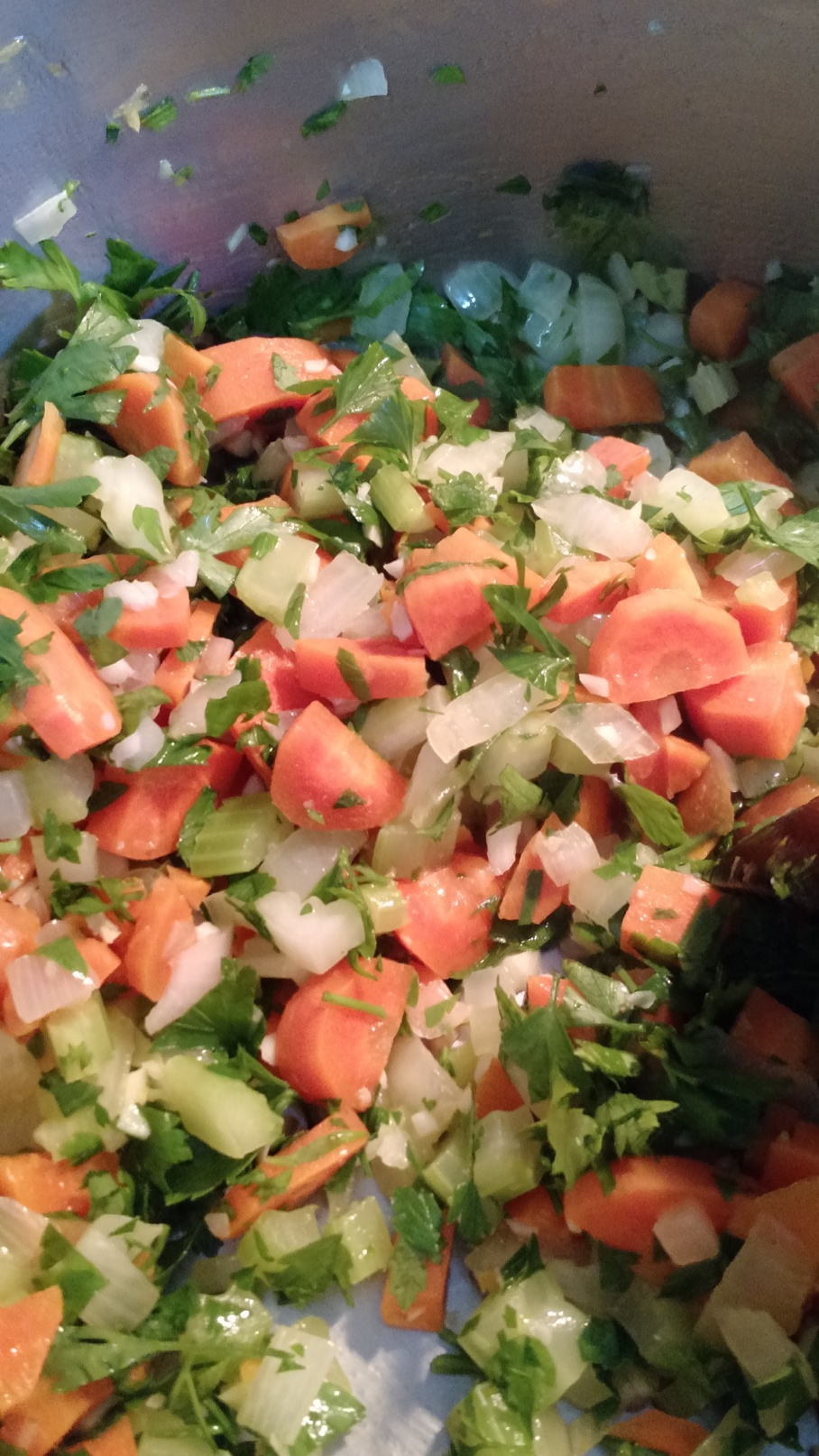
Then, add in the tomatoes and tomato paste.

Stir it all up and cook for 10 minutes over medium heat. This is a good time to cut up the fish while the tomato is being incorporated. Actually, save yourself some time and ask whoever’s behind the counter to cut the fish up for you when you buy it.
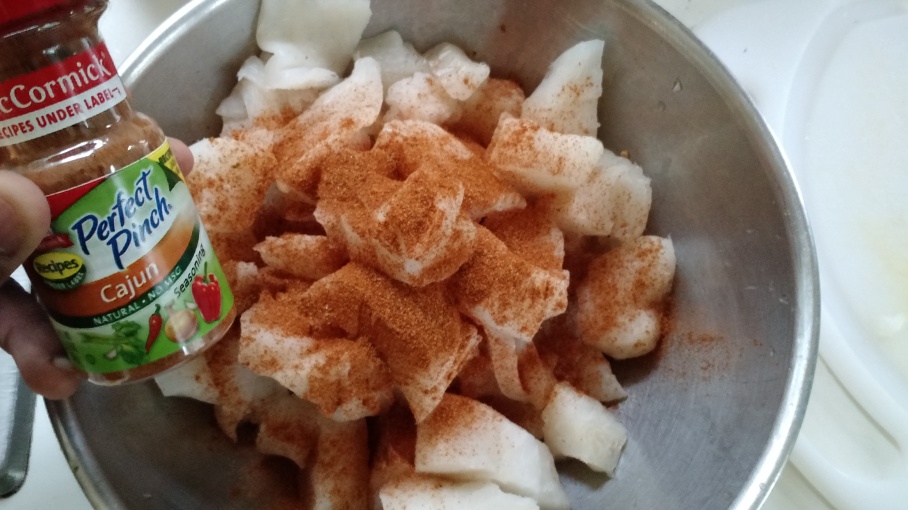
This is when I tossed the fish pieces in Cajun spices for extra stew flavor! If it’s been 10 minutes, add the fish and the clam juice to the pot. Water or fish stock (or part of the beer you’re drinking) can be added here if the stew looks a little thick.
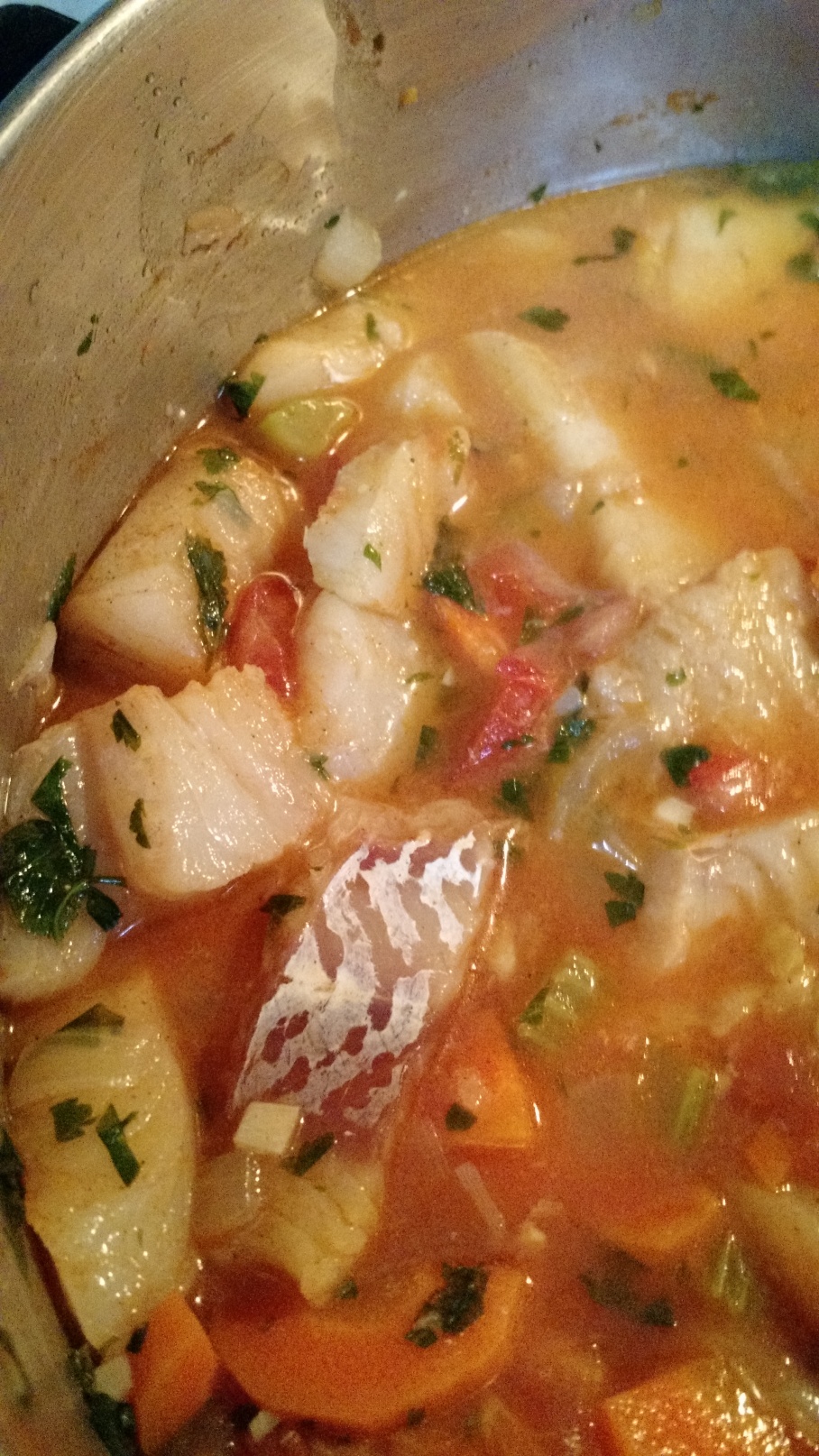
Simmer the pot until the fish is cooked through, around 10 minutes depending on the size of the chunks. Now is also the time to add the various spices and seasonings that I picked out earlier. A little extra salt will bring out the flavor of the tomatoes in the stew, so don’t be afraid to Bam!™ it up a notch. Once the fish has turned white and starts flaking apart, it’s ready to be served.

There you have it! The stew pairs well with some pieces of crusty bread and fresh cilantro/leftover parsley. The piping hotness of this recipe is just the thing to keep you fueled up during those hot summer days cold winter nights. Enjoy!





















































































